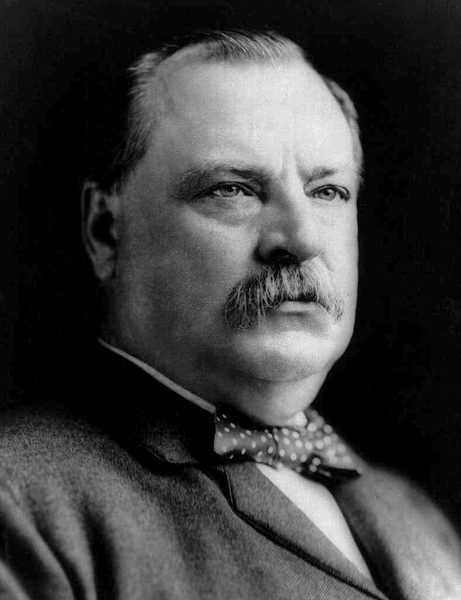 After investigating the illegal overthrow of the Hawaiian Kingdom government by United States forces on January 17, 1893, President Cleveland notified the Congress on December 18, 1893, “When our Minister [diplomat] recognized the provisional government the only basis upon which it rested was the fact that the Committee of Safety had in the manner above stated declared it to exist. It was neither a government de facto nor de jure (p. 453).”
After investigating the illegal overthrow of the Hawaiian Kingdom government by United States forces on January 17, 1893, President Cleveland notified the Congress on December 18, 1893, “When our Minister [diplomat] recognized the provisional government the only basis upon which it rested was the fact that the Committee of Safety had in the manner above stated declared it to exist. It was neither a government de facto nor de jure (p. 453).”
The Committee of Safety was a group of thirteen insurgents that sought the protection of United States troops from the American diplomat, John Stevens, assigned to the Hawaiian Kingdom when they would declare themselves to be a provisional government. The insurgents sought protection from being apprehended for the crime of treason by law enforcement of the Hawaiian Kingdom. As soon as the Committee of Safety declared themselves to be the provisional government of the Hawaiian Kingdom, the American diplomat extended de facto recognition. De facto is a government “in fact” where it is in complete control of all governmental machinery, while de jure is a government “in law” established through the normal course of a country’s legal system. Cleveland concluded, “the Government of the Queen…was undisputed and was both the de facto and the de jure government (p. 451).” He explained to the Congress,
“That it was not in such possession of the Government property and agencies as entitled it to recognition… Nevertheless, this wrongful recognition by our Minister placed the Government of the Queen in a position of most perilous perplexity. On the one hand she had possession of the palace, of the barracks, and of the police station, and had at her command at least five hundred fully armed men and several pieces of artillery. Indeed, the whole military force of her kingdom was on her side and at her disposal, while the Committee of Safety, by actual search, had discovered that there were but very few arms in Honolulu that were not in the service of the Government. In this state of things if the Queen could have dealt with the insurgents alone her course would have been plain and the result unmistakable. But the United States had allied itself with her enemies, had recognized them as the true Government of Hawaii, and had put her and her adherents in the position of opposition against lawful authority. She knew that she could not withstand the power of the United States, but she believed that she might safely trust to its justice. Accordingly, some hours after the recognition of the provisional government by the United States Minister, the palace, the barracks, and the police station, with all the military resources of the country, were delivered up by the Queen upon the representation made to her that her cause would thereafter be reviewed at Washington, and while protesting that she surrendered to the superior force of the United States, whose Minister had caused United States troops to be landed at Honolulu and declared that he would support the provisional government, and that she yielded her authority to prevent collision of armed forces and loss of life and only until such time as the United States, upon the facts being presented to it, should undo the action of its representative and reinstate her in the authority she claimed as the constitutional sovereign of the Hawaiian Islands (p. 453).”
The investigation concluded that the United States unlawfully intervened in the internal affairs of the Hawaiian Kingdom, and that its diplomat and troops were directly responsible for the illegal overthrow of the Hawaiian government. Secretary of State Walter Gresham recommended to President Cleveland that the Hawaiian government must be restored and compensation provided. This prompted executive mediation between U.S. diplomat Albert Willis and Queen Lili‘uokalani in Honolulu to settle the dispute and by exchange of notes an executive agreement, called the “Agreement of Restoration,” was concluded whereby the President committed to the restoration of the Hawaiian government and the Queen, thereafter, to grant amnesty to the insurgents.
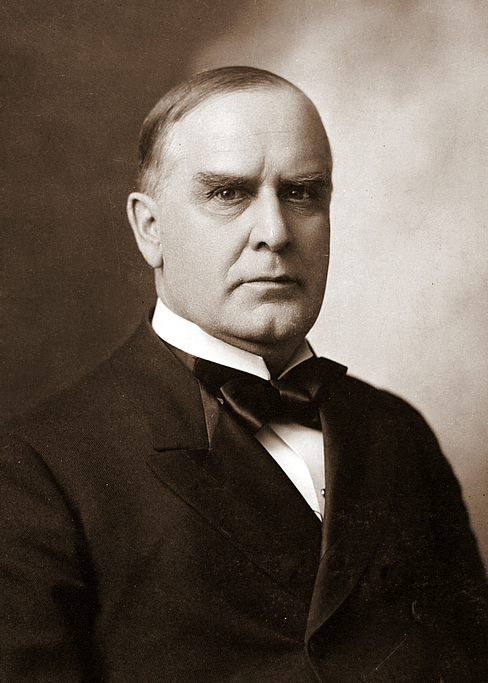 The President, however, did not carry out the international agreements because of political wrangling in the Congress, and the insurgents renamed themselves the Republic of Hawai‘i. President Cleveland’s successor, William McKinley, after failing to acquire Hawai‘i by a treaty of cession, signed a Congressional joint resolution of annexation into United States law on July 7, 1898, and unilaterally seized the Hawaiian Islands during the Spanish-American War on August 12, 1898, which began an illegal and prolonged occupation.
The President, however, did not carry out the international agreements because of political wrangling in the Congress, and the insurgents renamed themselves the Republic of Hawai‘i. President Cleveland’s successor, William McKinley, after failing to acquire Hawai‘i by a treaty of cession, signed a Congressional joint resolution of annexation into United States law on July 7, 1898, and unilaterally seized the Hawaiian Islands during the Spanish-American War on August 12, 1898, which began an illegal and prolonged occupation.
The Hawaiian Kingdom had completely adopted the separation of powers doctrine since 1864 and the government separated into three branches: executive, legislative and judicial. Here is what the government would have looked like if restoration took place according to the executive agreements, as provided by Thrum’s Hawaiian Annual for the year 1893.
In 1900, President McKinley signed into United States law An Act To provide a government for the Territory of Hawai‘i, and transformed the so-called Republic of Hawai‘i into the Territory of Hawai‘i. After which the United States intentionally sought to “Americanize” the inhabitants of the Hawaiian Kingdom politically, culturally, socially, and economically. To accomplish this, a plan was instituted in 1906 by the Territorial government, titled “Program for Patriotic Exercises in the Public Schools, Adopted by the Department of Public Instruction,” whose purpose was to denationalize the children of the Hawaiian Islands through the public schools on a massive scale.
Nearly 50 years later where denationalization was nearly complete, steps were taken to transform the government of the Territory of Hawai‘i into the State of Hawai‘i. President Eisenhower signed into United States law An Act To provide for the admission of the State of Hawai‘i into the Union on March 18, 1959. These laws, which have no effect beyond United States territory, stand in direct violation of treaties between the Hawaiian Kingdom and the United States, the 1907 Hague Convention, IV, and the Geneva Convention Relative to the Protection of Civilian Persons in Time of War, IV.
For the United States to have secured such a stronghold in the Hawaiian Islands as a governing body in a relatively short span of time was dependent upon the seizure of an already existing governmental infrastructure. The way in which thirteen insurgents calling themselves the Committee of Safety could take over the entire Hawaiian government on January 17, 1893, was by merely replacing the Queen as the chief executive and forcing everyone in the executive and judicial branches of government to sign oaths of allegiance while the U.S. troops provided oversight through intimidation and firepower. And when the U.S. troops were ordered to leave Hawai‘i on April 1, 1893, mercenaries replaced them until 1898 when U.S. troops returned to the islands.
A common misunderstanding is that the United States created the governmental infrastructure we have today through Congressional legislation such as the 1900 Organic Act that created the Territory of Hawai‘i, and the 1959 Admission Act that created the State of Hawai‘i. This is false. All that took place was the change in names and a few added agencies. The government of the State of Hawai‘i was formerly known as the government of the Territory of Hawai‘i. The government of the Territory of Hawai‘i was formerly known as the Republic of Hawai‘i. The government of the Republic of Hawai‘i was formerly known as the provisional government. And the government of the provisional government was formerly known as the Hawaiian Kingdom. The governmental infrastructure we see today was already in place in 1893.
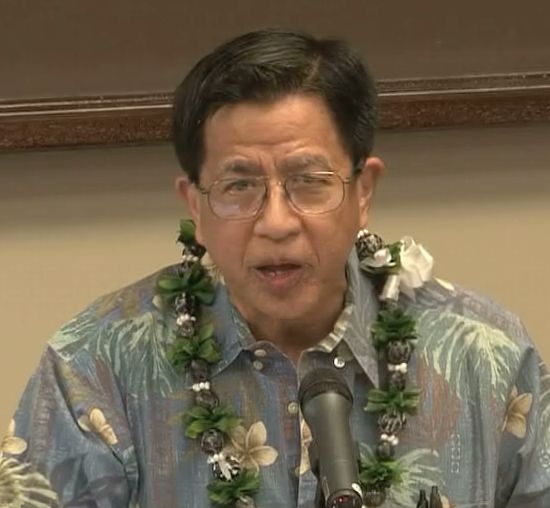 In a presentation at the University of Hawai‘i Richardson School of Law on April 17, 2014, senior Law Professor Williamson Chang stated, “The power of the United States, over the Hawaiian islands, and the jurisdiction of the United States in the State of Hawai‘i, by its own admissions, by its own laws, doesn’t exist. And so that means that ever since the 1898 annexation of Hawai‘i, by a Joint Resolution, they say, we have been living a myth.” “A joint resolution, as an act of Congress, cannot acquire another country,” he said. “If Congress cannot, by Joint Resolution in 1898, acquire Hawai‘i unilaterally, it cannot do so in 1959,” Chang said.
In a presentation at the University of Hawai‘i Richardson School of Law on April 17, 2014, senior Law Professor Williamson Chang stated, “The power of the United States, over the Hawaiian islands, and the jurisdiction of the United States in the State of Hawai‘i, by its own admissions, by its own laws, doesn’t exist. And so that means that ever since the 1898 annexation of Hawai‘i, by a Joint Resolution, they say, we have been living a myth.” “A joint resolution, as an act of Congress, cannot acquire another country,” he said. “If Congress cannot, by Joint Resolution in 1898, acquire Hawai‘i unilaterally, it cannot do so in 1959,” Chang said.
Because the United States Congress has no authority beyond the territory of the United States, the State of Hawai‘i cannot claim that it is a government duly authorized under a Congressional Act to govern the Hawaiian Islands. And as a direct successor of an insurgency that was unlawfully installed by the United States diplomat and troops on January 17, 1893, it too is neither a government de facto nor de jure. This means that actions that were understood to be governance are now interpreted as actions taken by individuals pretending to be a government. The law of occupation interprets these actions as war crimes: e.g. taxation is now interpreted as the crime of pillaging and theft; civil and criminal trials done by a court not properly constituted is now interpreted as the crime of depriving a person of a fair and regular trial; and to pursue federal recognition of Native Hawaiians as a tribe is interpreted as the crime of denationalization.
With this backdrop, Professor Chang warned the audience at the Law School, “I’m going to make one big point. …Its like a hand grenade, I’m going to give you the pin to the hand grenade, you pull the pin and everything blows up. So don’t pull the pin.”
The only way for the State of Hawai‘i to remedy this situation is to begin to comply with the laws of occupation, and by the doctrine of necessity, begin to act as a United States military government administering the laws of the Hawaiian Kingdom and the laws of occupation. This is a very complex situation and it should not be taken lightly. Dr. Keanu Sai was retained by the Office of Hawaiian Affairs CEO Dr. Kamana‘opono Crabbe to draft a memorandum and analysis of public international law and its effect on OHA and to provide recommendations in light of the alleged violations of international law and alleged war crimes. Dr. Crabbe provided all nine trustees a copy of Dr. Sai’s memorandum last week Friday.
Anecdotally—in 1893, the Hawaiian Porsche was carjacked by the United States and painted red, white and blue. Although we have not been driving the Porsche for the past 121 years and were brainwashed to believe it was not a Hawaiian car, it doesn’t mean the Porsche belongs to the United States. The fact that this history, which only spans two generations, is not common knowledge is the evidence of denationalization and the violation of Hawaiian sovereignty.

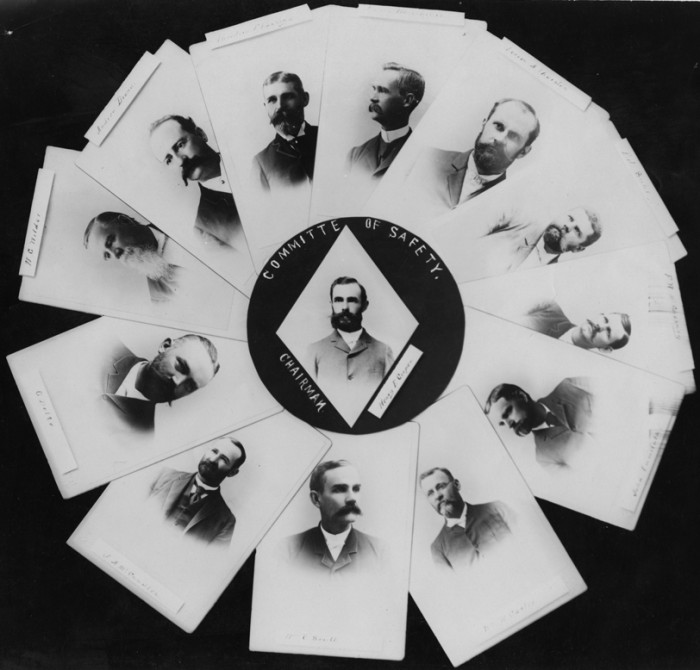
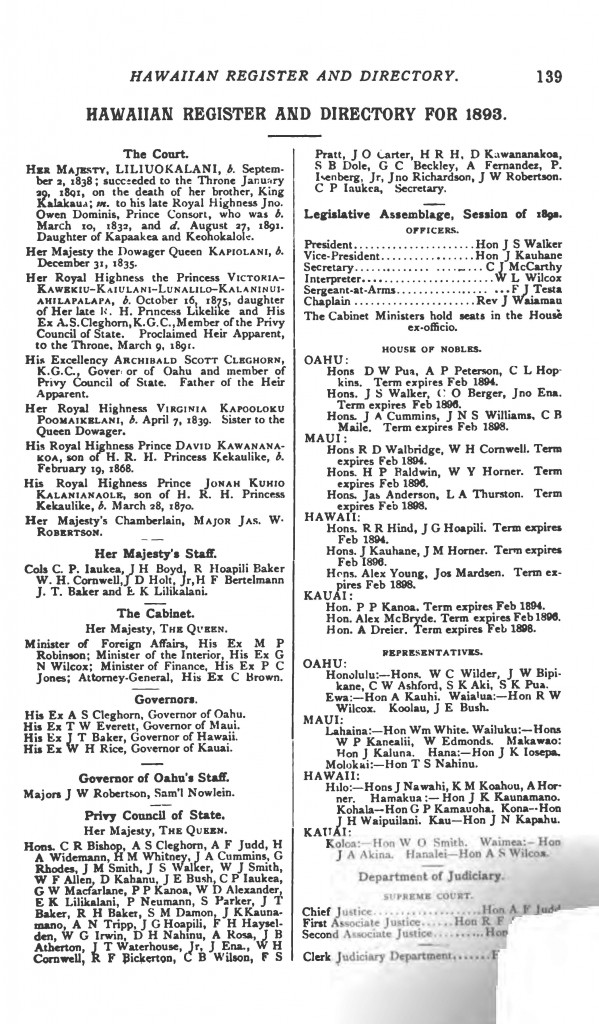


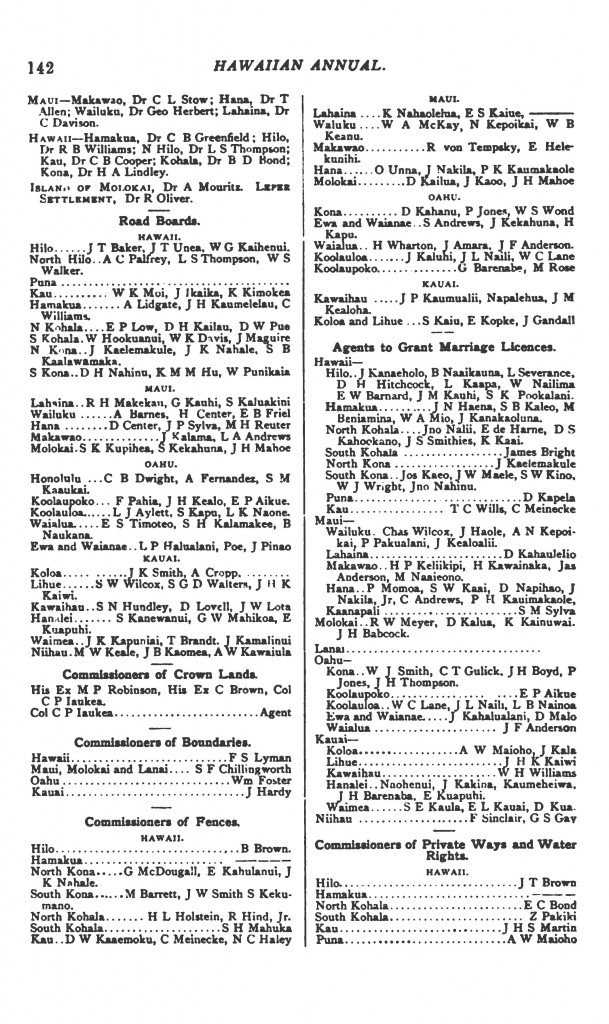
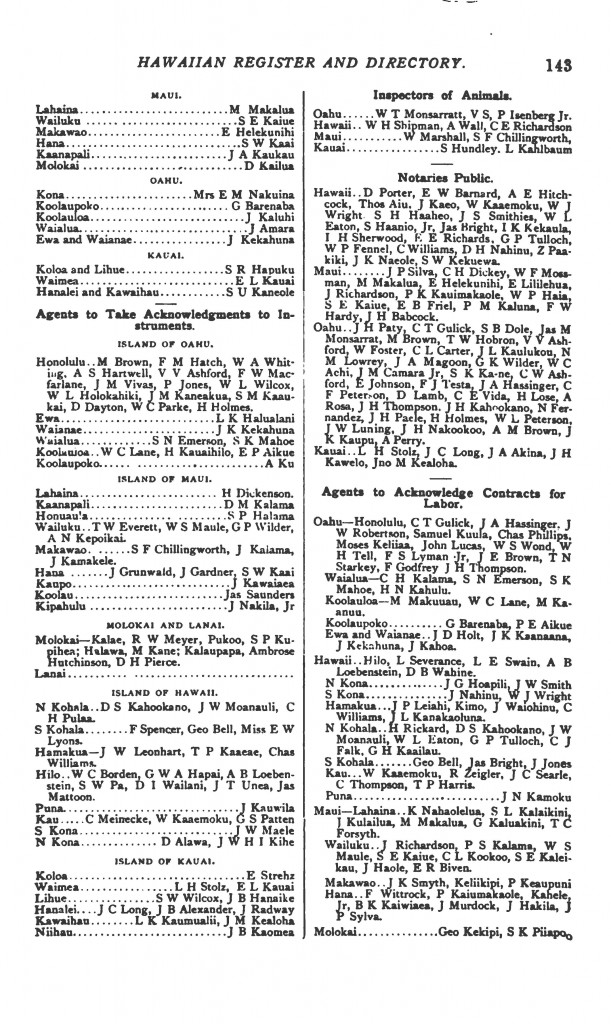
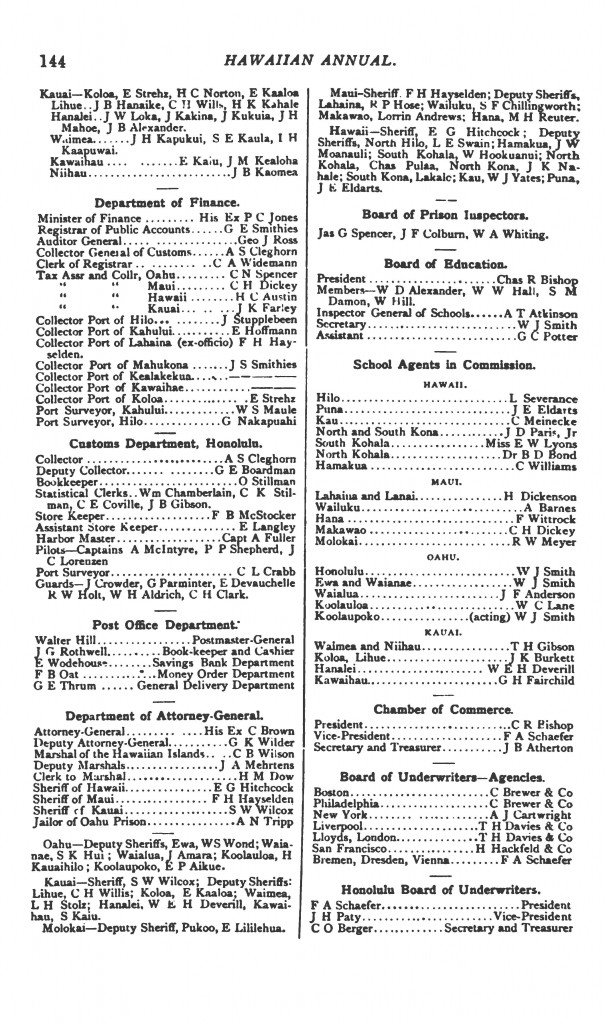

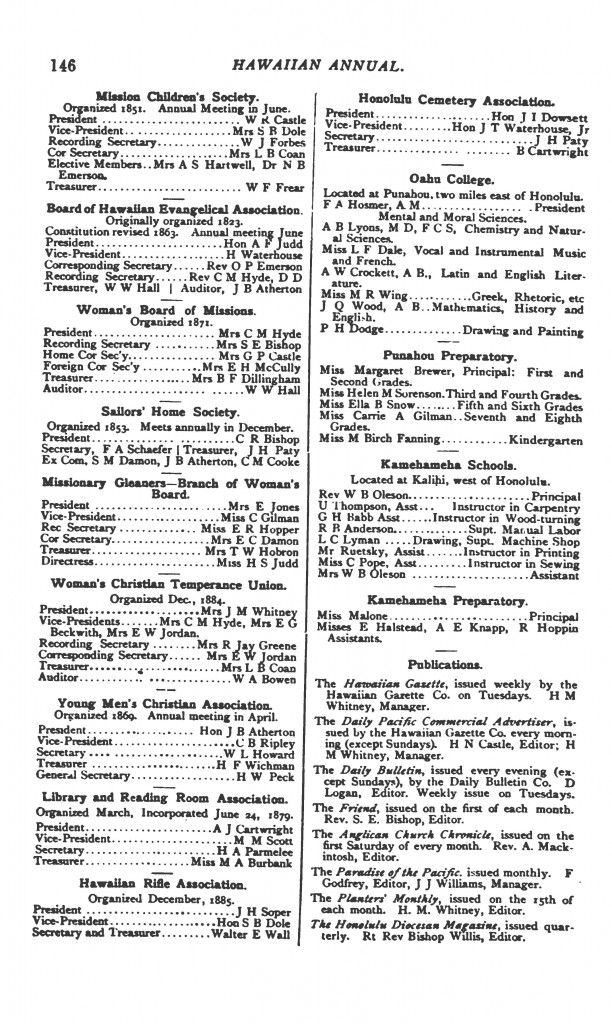
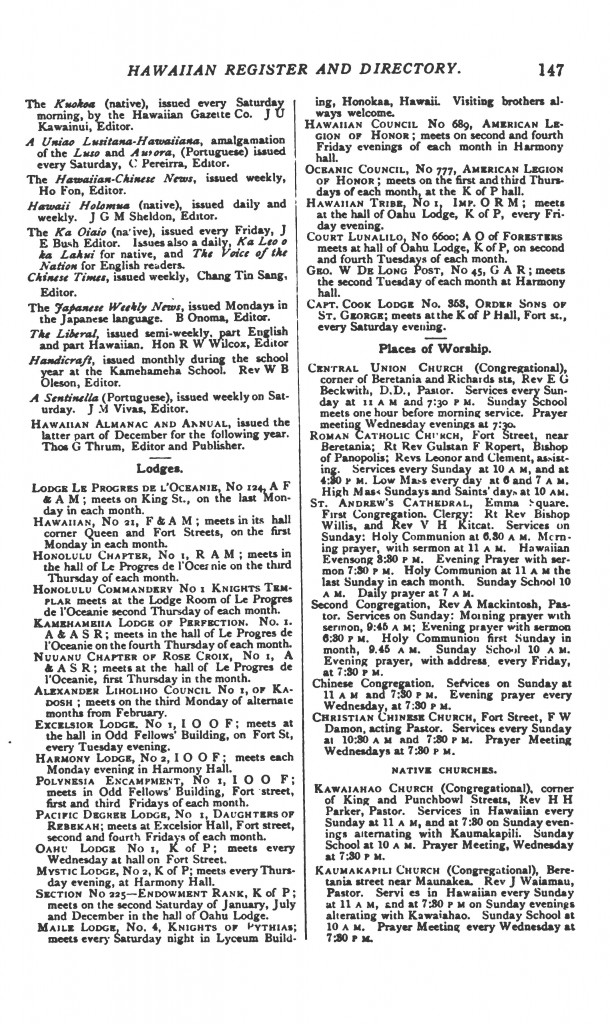

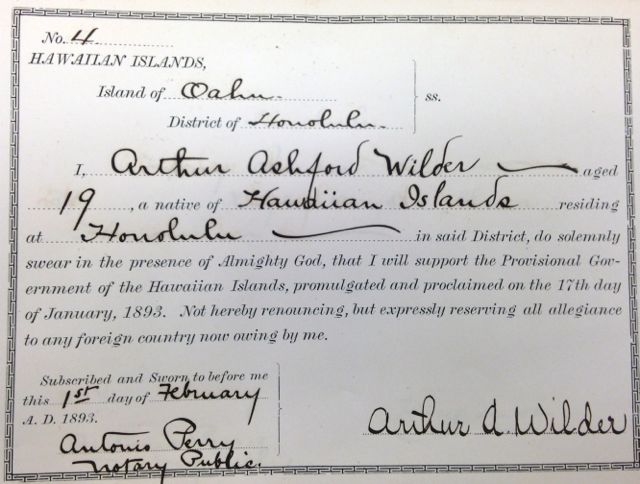
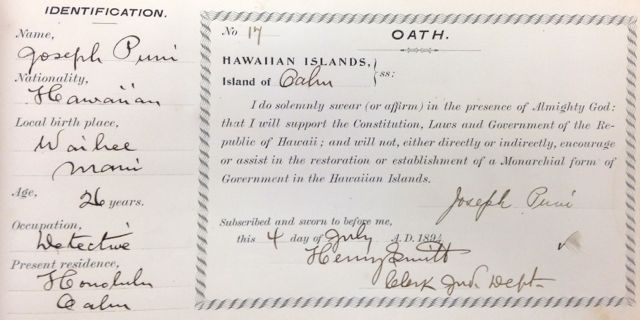
1. This prompted executive mediation between U.S. diplomat Albert Willis and Queen Lili‘uokalani in Honolulu to settle the dispute and by exchange of notes an executive agreement, called the “Agreement of Restoration,”
Sorry but an executive agreement is not consumated buy way of notes it is like a treaty and has to be prepared and delivered as such for both parties to enter into.
2.For the United States to have secured such a stronghold in the Hawaiian Islands as a governing body in a relatively short span of time was dependent upon the seizure of an already existing governmental infrastructure.
Was dependent upon the USURPING of an already existing governmental infrastructure.
Try to hit the hyperlink for “exchange of notes”. I’m not sure if that’s what you’re referring to?
Please clarify point number 1 on the Agreement of Restoration to show why the work done between Queen Liliuokalani andU.S. Diplomat Albert Willis is strong enough to withstand objections.
I’m just curious, what objection in particular? Is it the issue of timing that is of concern or what specifically? Thanks.
Aloha Noelani, I’m not sure where Mrkealii8 is coming from but here’s something to help. Justice Douglas,in U.S.v.Pink,cautioned how to interpret executive agreements. He explained, “The exchanges between the President and M. Litvinov must be read not in isolation, but as the culmination of difficulties and dealings extending over fifteen years. And they must be read not as self-contained technical documents, like a marine insurance contract or a bill of lading, but as characteristically delicate and elusive expressions of diplomacy. The draftsmen of such notes must save sensibilities and avoid the explicitness on which diplomatic negotiations so easily founder.”In other words, the form and substance of executive agreements are comprised of an exchange
of diplomatic notes and not laid out in a single document such as a formal contract or treaty.
According to Professor Garner, “Agreements in the form of an exchange of notes between certain high officials acting on behalf of States, usually their Ministers of Foreign Affairs or diplomatic representatives are numerous… They are employed for a
variety of purposes and, like instruments which are designated as ‘treaties’, they may deal with any matter which is a proper subject of international regulation. One of their most common objects is to record the understandings of the parties to a treaty which they have previously entered into; but they may record an entirely new agreement, sometimes one
which has been reached as a result of negotiation. While the purpose of an agreement effected by any exchange of notes may not differ from that of instruments designated by other names, it is strikingly different in its form from a ‘treaty’ or a ‘convention.’ Unlike a treaty, the relations which it establishes or seeks to establish is recorded, not in a single highly formalized instrument, but in two or more letters usually called ‘notes,’ signed by
Ministers or other officials.” Dr. Myers explains, “Exchange of notes is the most flexible form of a treaty… The exchange consists of an offer and an acceptance… The offering instrument contains a text of the proposed agreement and the acceptance
invariably repeats it verbatim, with assent.”
Mahalo for the info. I enjoy learning about these subjects. I didn’t understand what Kealii was commenting about and had hoped the hyperlink could possibly help to clarify.
As you seem well versed, would you be able to point me in the right direction to find information that would explain to me; whether Willis was only authorized for a specific period of time, to negotiate with the queen? I’ve heard my share of nay sayers. I’m unclear on how that process works but would think that Willis would be authorized to do US bidding until advised otherwise.
It’s all interesting anyway.
Mahalo, once again, Acting Government. Great information. Nice to see it in writing, the constitutional monarchy our alii created.
Virginia Poomaikelani, listed in the first section “The Courts”, headed the Board of Genealogy of the Hawaiian Chiefs around 1881-1885. I have yet to find a copy of those reports online. Could you post those. It may not be the appropriate time for the reports, as they most likely contain extremely controversial information. Can’t hurt to ask.
I wanted to share an interesting video, which I feel is a perfect example of one of the biggest problems we will face as we move forward. This individual, who I know nothing about, claims to be a Hawaiian and a loyal American. He appears to be educated. I personally have been wrestling with this question since I was exposed to Dr. Sai’s research over 3 years ago. Today, I don’t think it is possible to be a Hawaiian (subject) and a loyal American. Maybe he is still using Hawaiian as an ethnicity. Maybe you can’t teach an old dog new tricks, but then again I am no spring chicken.
http://hawaiifreepress.com/ArticlesMain/tabid/56/ID/12824/Video-Proud-Hawaiians-Loyal-Americans.aspx
Aloha TimReis, keen observations. And yes, I agree that the folks speaking on the video are a good example of social challenges our country Hawaii faces as we move forward with exposing and educating ourselves, families and the masses about the prolonged illegal occupation of Hawaii by the US.
Based on fact of law, Hawaii is an independent nation. Hawaii is its own sovereign territory/Country. We are not America. Simple as that. And as complex as that on the social and political fronts in Hawaii territory today. The folks on the video clip you shared clearly suffer cognitive dissonance. Cognitive dissonance will vary from person to person depending upon several factors.
Cognitive Dissonance is theory out of social psychology or the psychology of human behavior. It is not “good” or “bad” it just is. Citizens of Hawaii–under prolonged occupation as well as the “settler” and “immigrant” population will experience some degree of cognitive dissonance as more exposure and education of the prolonged occupation of Hawaii by US is disseminated abroad and throughout Hawaii Nei.
It appears that these individuals are confusing Hawaiian ethnicity with Hawaiian Nationality. OR perhaps they do not clearly understand nationality. At any rate, cognitive dissonance is when a person or groups of people holds two or more inconsistent sets of beliefs or act in ways inconsistent with how they believe they “ought” to have behaved. The inconsistencies cause excessive internal discomfort and or psychological/mental stress. There are ways to resolve dissonance like denial, rationalizing or making excuses, changing belief systems or actions and the most complex and difficult would be to integrate the two opposing beliefs or beliefs and actions.
Mahalo tnoelani for putting a name to this extremely frustrating condition. I completely understand and accept the kuleana that comes with being a Hawaiian Subject, however I am wrestling with how I exist as a Hawaiian Subject in this American reality, nightmare.
Some of the problems I am facing is “How do I not acquiesce, or fund this illegal occupation?” and the other is “I no more wa’a to get in”
I believe in order to get these people to accept the illegal occupation they need to see this wa’a. They are not going to jump off that galleon that America made using our wa’a, unless they see the wa’a.
OHA could use our money to start building that wa’a by providing an insurance fund to address automobile insurance requirements, a bank and the need for medical and dental care.
Medical and dental care that is not manipulated by corporations but rather focused on health. The American health industry ignores alternative cancer treatments that are superior in results to the current pharmaceutical options.
The Gerson Institute has completely cured thousand of cases of cancer. They cannot cure all cancers.
Research is showing that amalgams and root canals have severe health risks, yet they continue to perform these on people.
Studies are showing Type 2 Diabetes can be reversed with and organic vegetarian diet.
OHA could use that money to create a safe, sustainable food supply instead of the “food-like” products that are available to us and that research is showing is the cause of these chronic degenerative diseases many of us suffer from. Creating this safe, sustainable food supply would create so many jobs and do wonders our economy.
These are some of the changes, I feel need to occur YESTERDAY.
In the meantime I am treading water, trusting in the teachings of my kupuna, knowing the Acting Government is doing everything in their power to get that wa’a to us that are treading water.
Mahalo everyone for your manao.
Aloha Tim, what you see in the video is the evidence of 100+ years of Americanization. They have been programed into believing they are americans. Right now I can’t think of the term that describes this situation, but it is when the hostages start to sympathize with the kidnappers and think they are actually good guys.
I think the host of the video is actually a candidate for OHA who suffers from Americanitis. If you noticed, all his questions for his guest or his answers to their questions were based on their own opinions and not specific Treaties, International laws or legal doctrines. This guy is a smooooth talker selling nothing more than snake oil or americanization.
Tim,I like to keep things real simple. Hawaii is a recognized nation state since 1843. That is a legal presumption in international Law unless the U.S. can rebut that presumption with admissible evidence which would be in the form of a TREATY. Until that happens, Hawaii is under a prolonged beligerent occupation by the U.S., so all their congressional legislation such as, annexation, territory, statehood, OHA ..etc. could not and has not extinguished the Hawaiian Kingdom. If it could not extinguish the nation state of the Hawaiian Kingdom than it could never, never extinguish the nationality of the Kingdom’s citizenry. You could never legally be an american as a result of that illegal situation.
All this talk about sending paper work to the U.S. denouncing U.S. citizenship and repatriation is a bunch of RUBBISH. Did you ever here of Iraq’s citizens while occupied telling the U.S. they want to denounce their U.S. citizenship and repatriate to be Iraqi citizens again? I’m not saying that is what you are about but I read others posting on this blog. I don’t mean to sound harsh but just want to get it right. I hope this is of some help in your thought process.
Aloha Kekoa,
I believe the term you’re looking for is called the “Stockholm Syndrome”. These young people seem to be out of touch with the true history of our people and they are confused. It’s sad to see our young educated people talk like this.
A Hui Hou
It so is sad. Especially the young generation! They so need to know the legal history of Hawaii because if we ever do get de-occupied, this will mostly affect them. And I’m one of them! Stockholm Syndrome is a interesting comparison, Kekoa! I mostly call this psychological institutionalization of this occupation the most massive case of “child abuse” in human history. Where Nazi Germany had failed in its occupied territories, the U.S. occupation of Hawaii succeeded! And I cannot wait for it to fail with the power of knowledge and aloha!
Mahalo Kuniole, yes it’s sad but fixable. Education is the Key. Once educated it’s up to that individual to use that key to open the door to freedom and take control of all that is positive for the betterment of one’s self and their nation or be locked in the opressor’s box and remain under his control. We must keep educating our people so they have a choice to be in control of endless possibilities.
Aloha Noelani, one would only need to look at the chronological order in which Mr. Willis performed his negotiations for President Cleveland. Then look at what President Cleveland did with those negotiations and Declaration signed by the Queen to see it was conducted and concluded with the Blessing of the President as a sole executive aqreement.
U.S. investigations were concluded on Oct. 18, 1893. Willis started negotiations for settlement with Queen on Nov.13, 1893. The Queen singed the Declaration for settlement on Dec. 18, 1893 and Willis forwarded it to Secretary of State Walter Gresham on Dec. 20, 1893. On Jan. 13, 1894 President Cleveland gave a Presidential message to Congress notifying them of the Executive Agreement for Settlement with the Queen.
I have not found any documentation that suggests there was a time line for Willis or Cleveland in this matter. That executive agreement for settlement is a done deal and binds all successor Presidents since Cleveland.